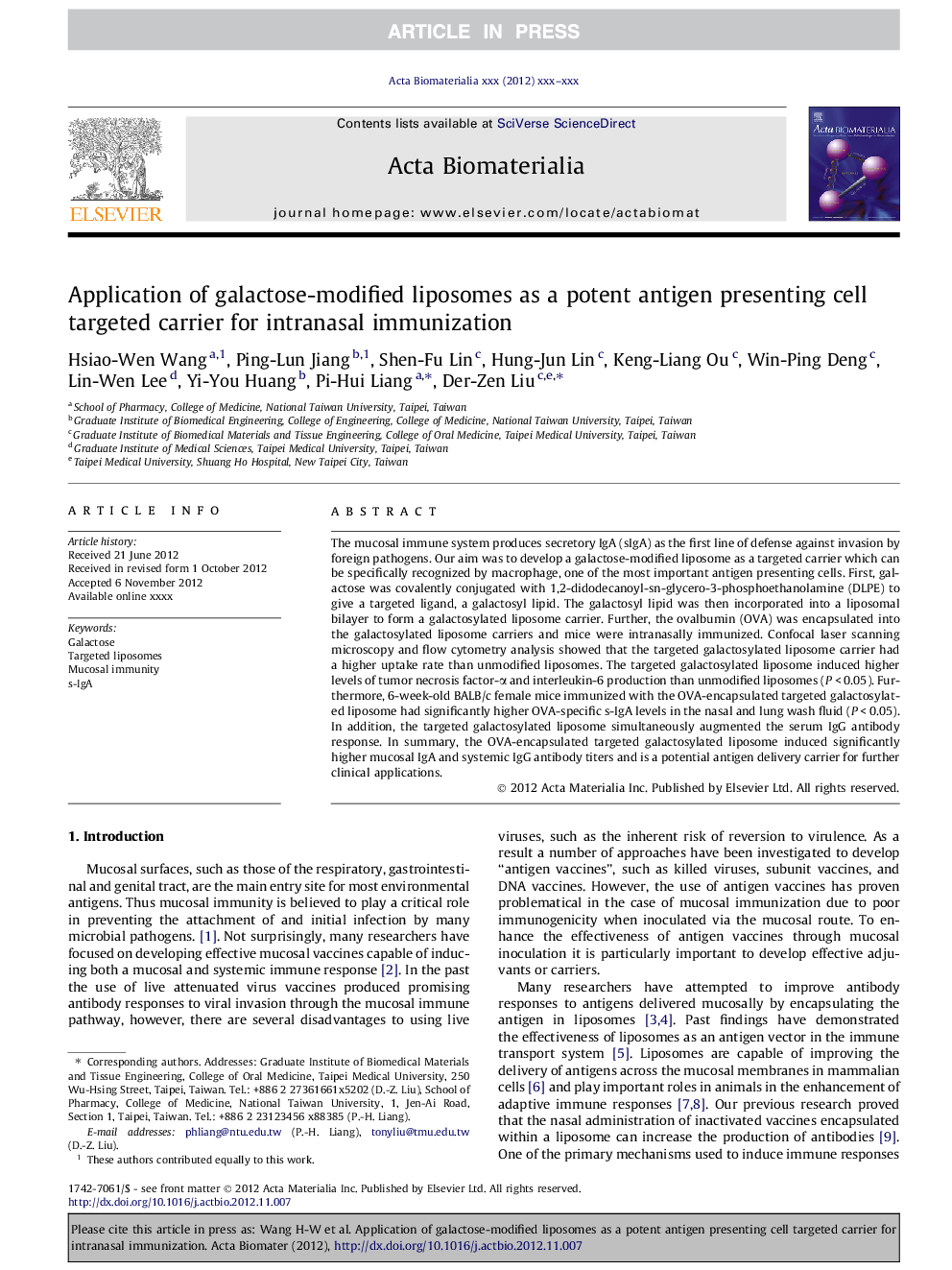| Article ID | Journal | Published Year | Pages | File Type |
|---|---|---|---|---|
| 10160020 | Acta Biomaterialia | 2013 | 8 Pages |
Abstract
The mucosal immune system produces secretory IgA (sIgA) as the first line of defense against invasion by foreign pathogens. Our aim was to develop a galactose-modified liposome as a targeted carrier which can be specifically recognized by macrophage, one of the most important antigen presenting cells. First, galactose was covalently conjugated with 1,2-didodecanoyl-sn-glycero-3-phosphoethanolamine (DLPE) to give a targeted ligand, a galactosyl lipid. The galactosyl lipid was then incorporated into a liposomal bilayer to form a galactosylated liposome carrier. Further, the ovalbumin (OVA) was encapsulated into the galactosylated liposome carriers and mice were intranasally immunized. Confocal laser scanning microscopy and flow cytometry analysis showed that the targeted galactosylated liposome carrier had a higher uptake rate than unmodified liposomes. The targeted galactosylated liposome induced higher levels of tumor necrosis factor-α and interleukin-6 production than unmodified liposomes (P < 0.05). Furthermore, 6-week-old BALB/c female mice immunized with the OVA-encapsulated targeted galactosylated liposome had significantly higher OVA-specific s-IgA levels in the nasal and lung wash fluid (P < 0.05). In addition, the targeted galactosylated liposome simultaneously augmented the serum IgG antibody response. In summary, the OVA-encapsulated targeted galactosylated liposome induced significantly higher mucosal IgA and systemic IgG antibody titers and is a potential antigen delivery carrier for further clinical applications.
Related Topics
Physical Sciences and Engineering
Chemical Engineering
Bioengineering
Authors
Hsiao-Wen Wang, Ping-Lun Jiang, Shen-Fu Lin, Hung-Jun Lin, Keng-Liang Ou, Win-Ping Deng, Lin-Wen Lee, Yi-You Huang, Pi-Hui Liang, Der-Zen Liu,
